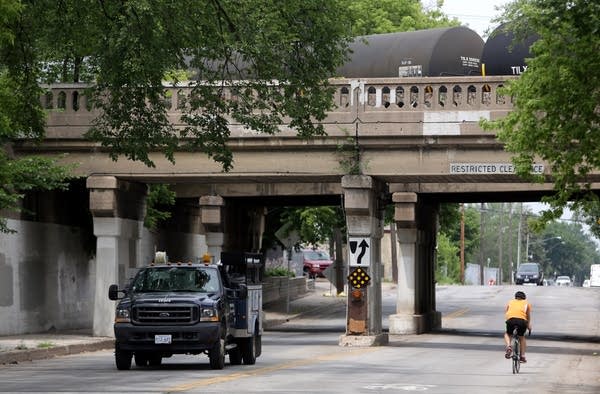Dayton orders inspections as oil train traffic jumps in downtown Mpls.

An oil train travels across one of two railroad bridges over Monroe Street in Minneapolis. In July, BNSF Railway began shifting some of its oil trains to a route that passes through Minneapolis' western suburbs and moves along the edge of downtown.
Jeffrey Thompson | MPR News
Go Deeper.
Create an account or log in to save stories.
Like this?
Thanks for liking this story! We have added it to a list of your favorite stories.


